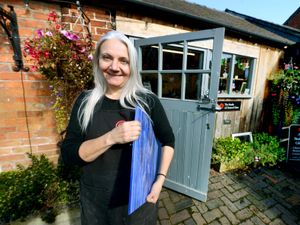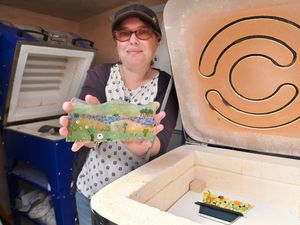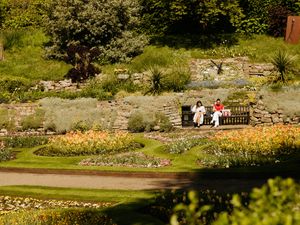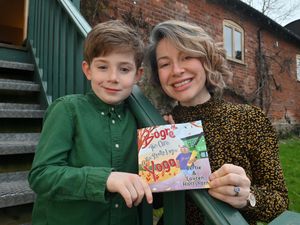Colourful craft: what it's like to be a stained glass artist
Stained glass windows have long been admired for their beauty and intricacy.

The practice of using coloured glass for decorative purposes dates back to ancient Rome.
But the art is still very much alive today with new pieces still being produced for religious and public buildings, homes and businesses.
Among those practising the craft is Amanda Siegert who has more than 20 years’ experience in designing, making and restoring stained glass windows. She works from a studio at Amerton Farm in Stowe by Chartley, near Stafford, and also travels to a variety of different buildings to carry out minor repairs in situ.
Her passion for stained glass was first ignited during a three-year apprenticeship in photogrammetry and cartography.
Amanda specialised in the mapping of historic buildings and would use close range, undistorted colour images to plot them in 3D for the likes of English Heritage, architects and conservators.
The process involved accurately drawing stonework, tracery and windows such as the Oriel Window at Hampton Court Palace.
“I would see all these amazing windows and all of the different colours. That’s where my interest in stained glass started,” says Amanda.
She made her first window during evening classes in St Albans in the late 1990s and it’s now on display in her studio. “I could tell you everything that’s wrong with it like the soldering is too lumpy because the iron wasn’t hot enough. The teacher told me it was a very ambitious design. I’ve thought about re-making it but I never have the time and I think it shows how far I’ve come.”
Amanda went on to study for a HND Btec in 3D Design specialising in glass and silversmithing at Kensington and Chelsea College.
After relocating to Basingstoke, she began working at a stained glass business in Reading in 2005 where she honed her skills. She was a designer, painter, maker, advisor and assistant in this busy studio and she says it enabled her to gain the commercial and architectural experience needed to set up on her own.
Last year, Amanda and her partner Jem moved to Staffordshire and she opened a new workshop for her business, AS Stained Glass, at Amerton Farm.
“It’s a really great community and there seems to be a lot of demand for this kind of work here,” says Amanda.
Working with glass gives her the opportunity to be creative while making something that will survive for generations to come.
“I enjoy everything about it but I really like knowing that my work has longevity. I like to think what I’m creating will outlive all of us. A window can last 80 to 90 years before it needs re-leading, that’s how long it takes the cement that makes its weatherproof to harden and crack. Once that’s replaced, it will last for another 80 to 90 years.”
Over the years she has worked on many different projects including helping to create stained glass windows for sliding doors inside the Banks family’s home in the 2018 film Mary Poppins Returns.
When starting a window from scratch, first she will draw out the design, which might be one of her own or provided by the customers.
She then cuts the different coloured and clear pieces of glass needed for the pattern using a specialist tool as well as strips of lead that will hold them in place.
There are many different types of glass available such as waterglass which has ripples in the surface, hammered glass which has a textured, pebble-like appearance, and English Muffle glass, which was originally popular in Victorian windows.
“You’re basically creating a big jigsaw with the glass and the lead is the joining mechanism. Copper foil can also be used as a joining mechanism and this is the technique made famous by Tiffany. With lead, you solder over the joints to secure it in place. With copper foil, you solder over it and you get silver seams,” explains Amanda.
Lead light cement and whiting is then applied to make the window waterproof and to clean the glass.
As well as taking on commissions to create new and unique pieces for people’s homes, she also undertakes repairs and restorations to bring existing windows back to life.
“Repairs in situ can be challenging but for me I like it when the customer says: which one did you repair? Because this means the repair isn’t obvious and I’ve done a good job,” says Amanda.
Sharing her knowledge with others is also important to the business owner, so she also runs her own courses helping people to learn the skills needed to produce their own pieces of glass work.
These include classes for beginners and improvers in stained glass, fused glass and glass painting.
“I run the class that I would want to have and never have more than four people so they have my full attention. I always make sure not only to explain to my students what they need to do but also why they are doing it. My students are always amazed at how much they can achieve in a day,” says Amanda.
For more information about Amanda’s courses see as-stainedglass.co.uk or facebook.com/ASstainedglass





